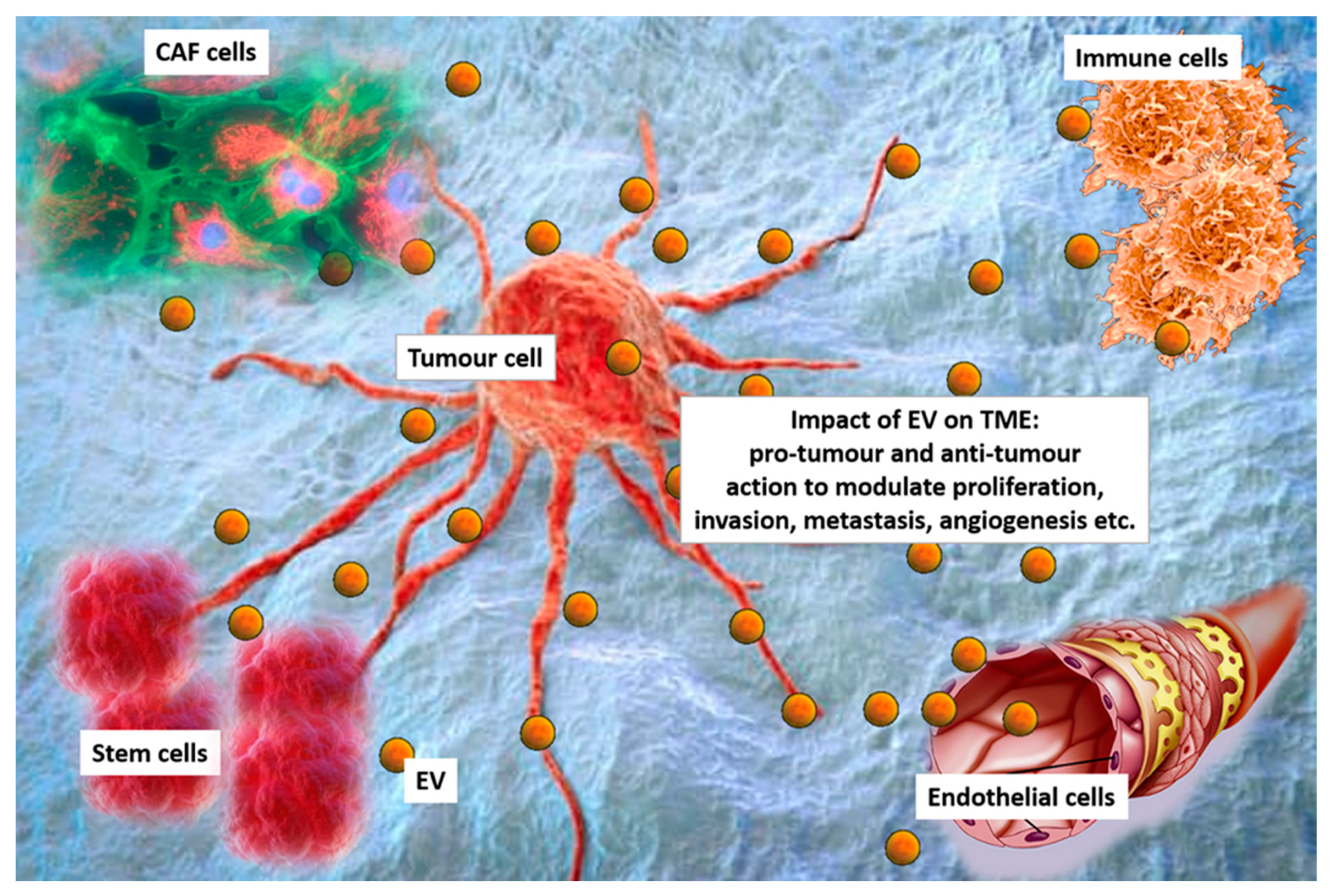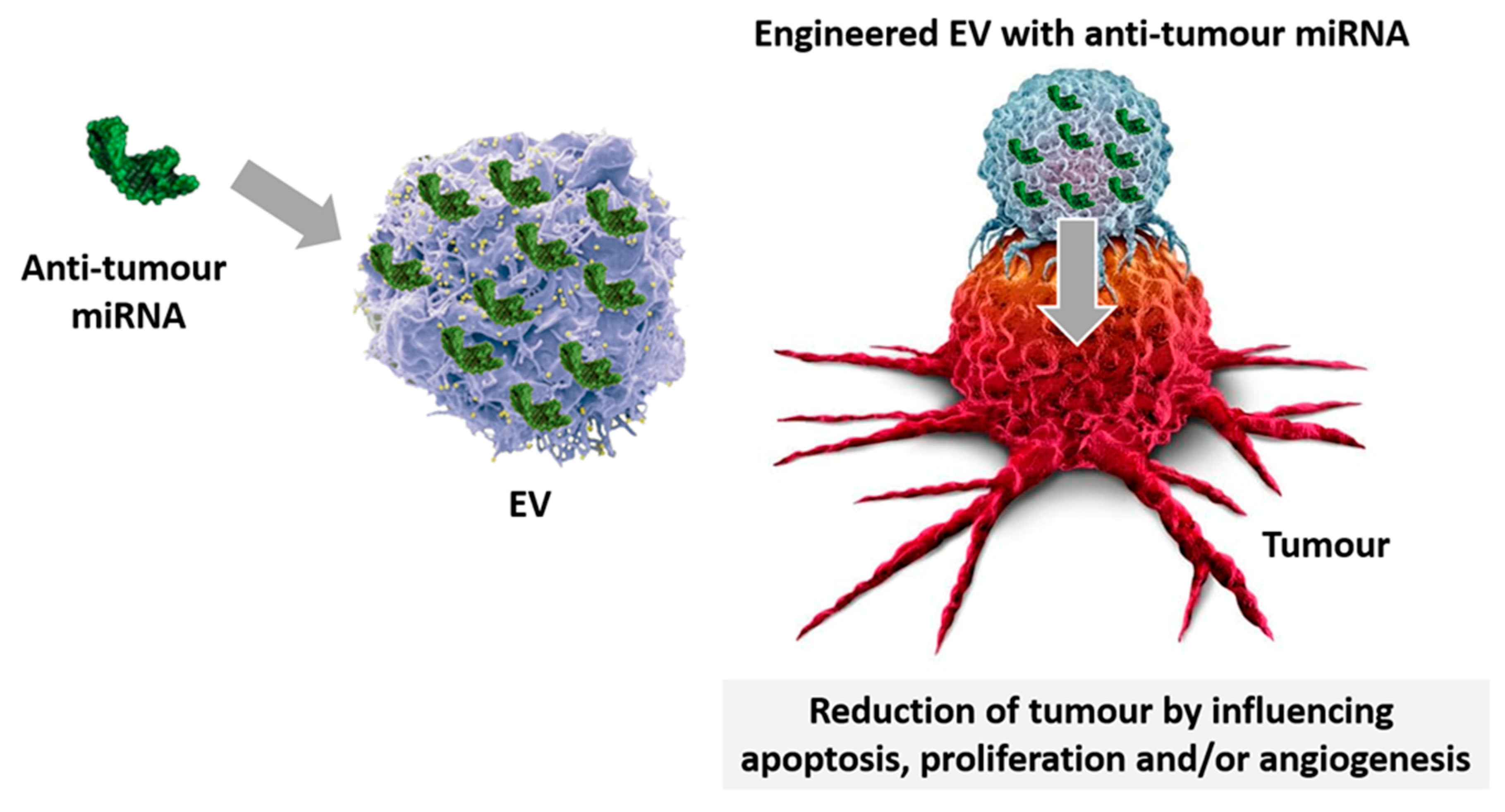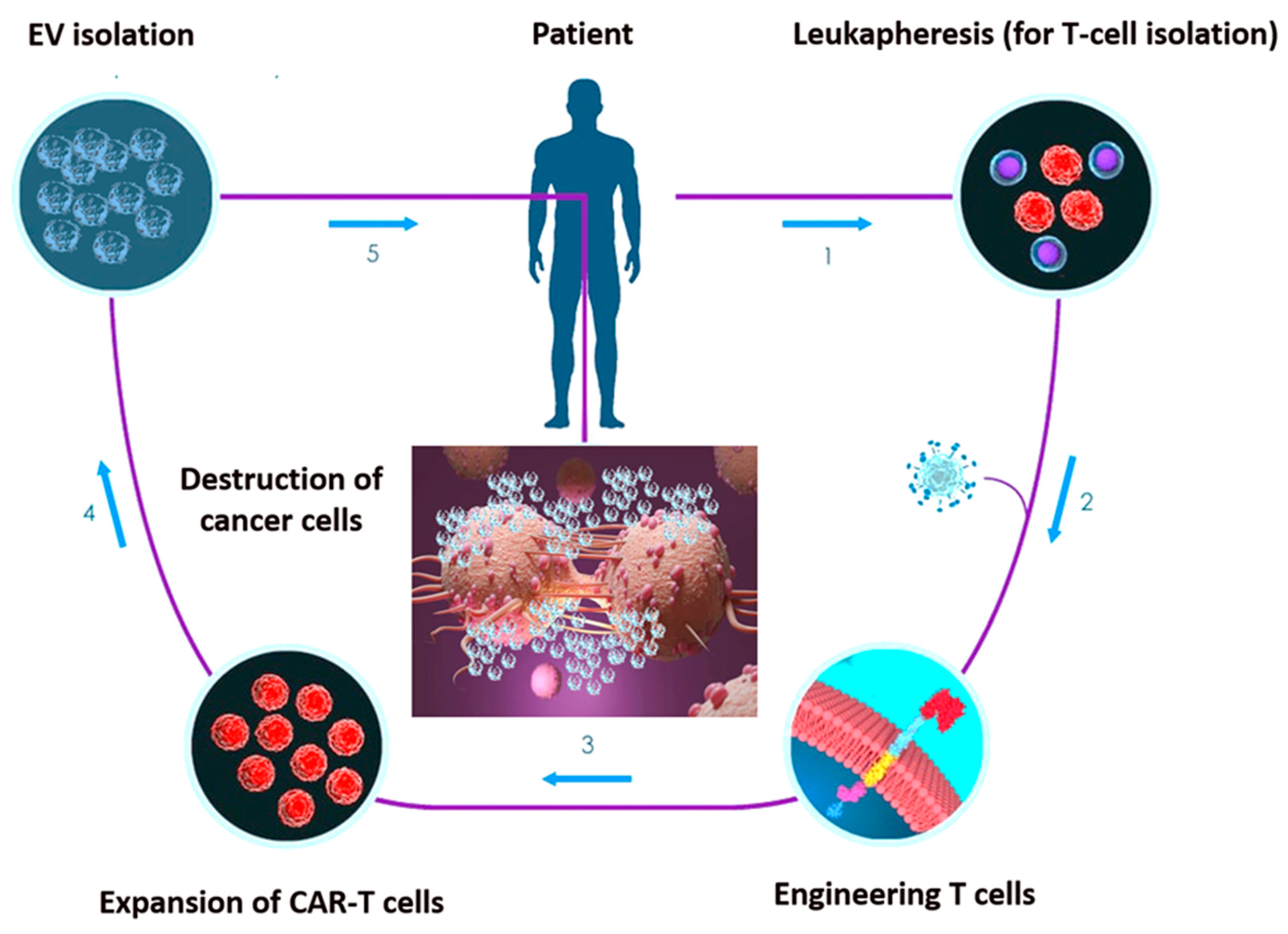The tumour microenvironment (TME) contains cells of different origin, including cancer, immune, endothelial, and stromal cells. In the last decades extracellular vesicles (EV) released by these cells have gained attention as drivers of the TME diversity and tumour behaviour. In the TME, EV can switch tumour growth, immune-escape and metastatic spread or exert anti-tumour activity depending on their cell of origin and cargo. Moreover, since potentially detectable in different biological fluids, EV have been proposed as diagnostic and therapeutic, or “theragnostic” tools. Specifically, EV cargo has been considered a tumour “fingerprint”, and differentially expressed proteins and genetic materials proposed as potential targets for anti-cancer based therapies. Approaches using engineered EV or EV as naturally delivery system for “therapeutics” have been explored in preclinical models and their effectiveness, in targeting the TME, proven in primary and metastatic tumours. More recently, CAR-T cells and CAR EV combo platform have been proposed to improve the CAR-based anti-cancer approach. Likewise, their potential application for immune cell targeting has provide significant insights to move towards anti-cancer immunotherapeutic approaches. On these bases, a number of clinical trials aimed to deeply explore EV clinical application as anti-tumour based approach or “theragnostics” are on-going. Should validated as diagnostic/prognostic/anti-cancer tools the still open questions would be hopefully addressed and their clinical application would become the on-coming challenge against cancer. However, to move towards EV clinical application several hurdles including potency tests, scalability and full characterization in agreement with the regulatory agency should be solved.
- TME
- EV
- tumor cells
1. Content

Figure 1. Extracellular vesicles (EV) in the tumour microenvironment (TME). Cancer cells, cancer associated fibroblasts (CAF), immune cells, stem cells and endothelial cells interact each other via EV in the TEM. EV can exert pro-tumour or anti-tumour effects to modulating proliferation, invasion, metastasis formation and angiogenesis.
Figure 2. Set-up phases of chimeric antigen receptor (CAR)-engineered T-cell (CAR-T) EV engineering. 1. T cells undergo collection through positive or negative selection methods from cancer patients’ peripheral blood sample. 2. T cells are transfected with CARs through viral or non-viral transfection technology. 3. CAR-engineered T cells are ex vivo expanded in the presence of IL-2. 4. CAR-T cell-derived EV undergo isolation. 5. EV can be re-infused in the patient after chemotherapy preconditioning.

Figure 3. EV-miRNA-loading. Specific miRNA displaying anti-cancer properties are loaded in EV and used for treatment. Engineered miRNA-EV despatch their anti-tumour effects by regulating apoptosis, proliferation, and angiogenesis.

